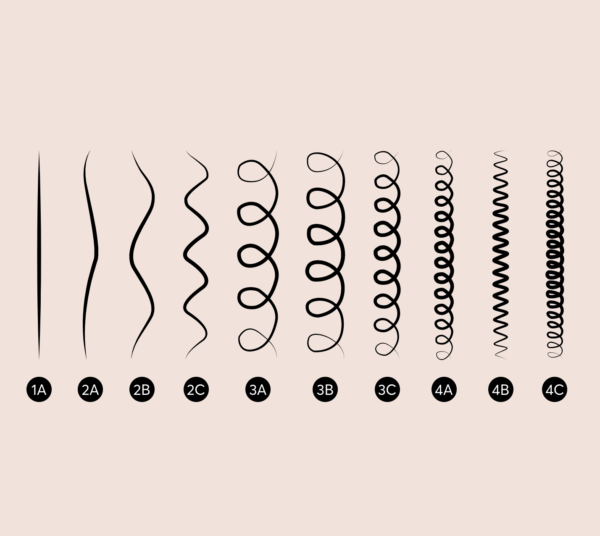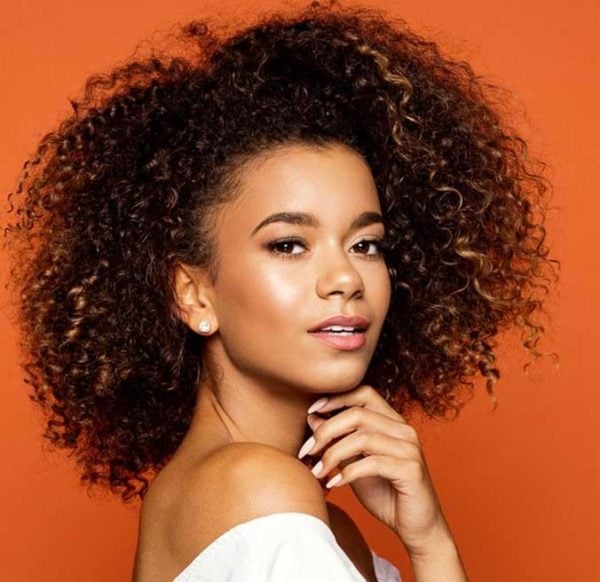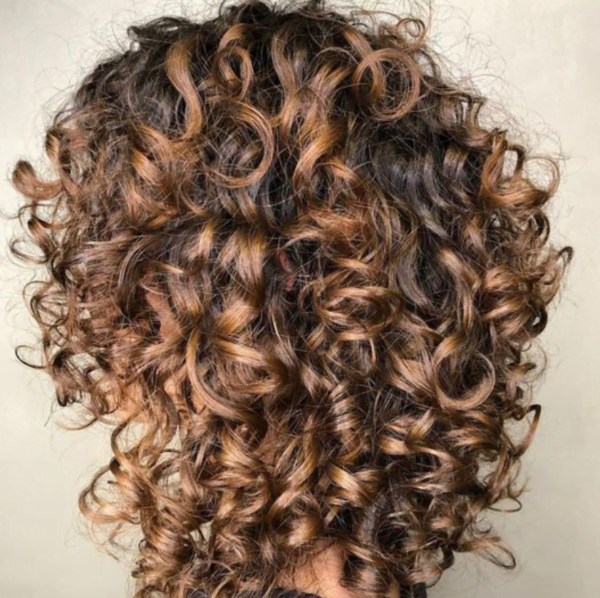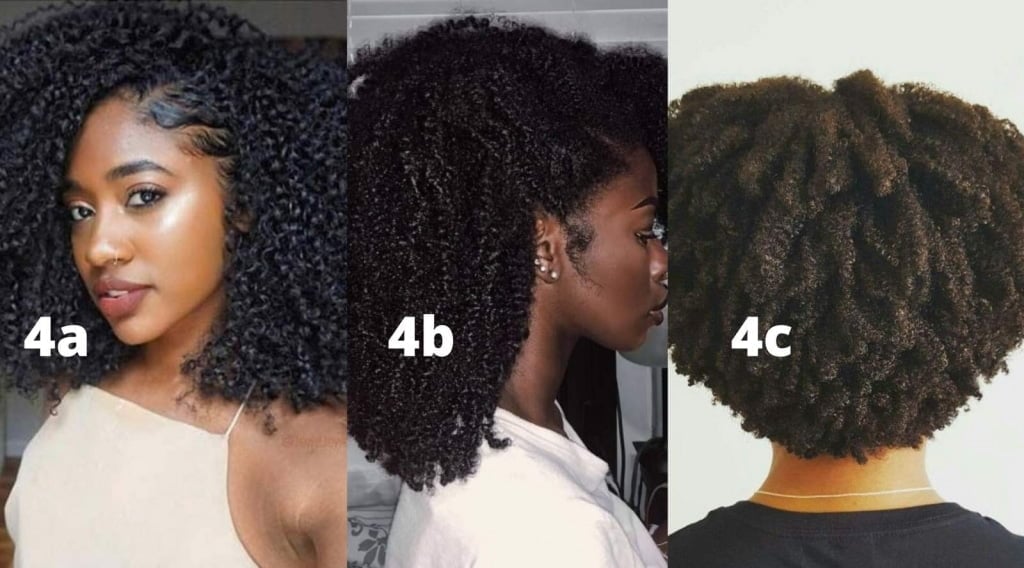
Do you have type 4 hair, and you can’t identify which type 4 subtype you have? You’re not alone.
One of the biggest problems naturalistas – including natural hair influencers and experts – face with their natural hair is identifying their curl patterns.
But why do you need to learn your curl pattern? Your curl pattern is key to unlocking the perfect hair regimen, finding the right hair products, and doubling your length retention!
Your current hair regimen may be working for you, but once you learn your curl pattern and step up your hair game to match it, you can solve your bugging hair woes, double or even triple your length retention, and improve the overall health of your hair.
If you’re able to learn your hair better, you’ll be able to speak its language. You’d know what works and doesn’t work for your hair in an instant.
Are you ready to discover your Type 4 subtype? Read on to find out the difference between subtypes 4a, 4b, and 4c hair.
Type 4a


Type 4a hair has medium-sized, loosely packed curls. The curls have a springy S-shape and are about the size of a crochet needle.
If you look closely at the 4a hair type, you’ll notice the curls are not as interlocked as 4b or 4c curls. Each 4a strand independently curls or spirals away from other neighboring strands.
4a hair has naturally well-defined curls and is easier to style and handle than 4b and 4c hair. It also has a reduced risk of natural breakage because of its loose curls.
Do your curls form S-shaped spirals? Do you find it easy to detangle and style your hair? Then, you might have curly, awe-mazing 4a hair.
4a Hair Moisturizing Tips
Like the other type 4 hair subtypes, 4a hair is prone to dryness and needs moisture. To prevent hair damage or breakage during manipulation, use natural hair butters (like shea butter) and essential oils.
Complement your scalp’s natural oil with hair oils, like almond, avocado, coconut, jojoba, and Jamaican black castor oils. These oils contain essential fatty acids that help thicken your hair, reduce hair loss, and are great for kinky, curly 4a hair.
So, how can you moisturize 4a hair?
Water is the greatest — and cheapest — moisturizer, so do well to regularly spritz your hair and scalp with clean water from your spray bottle. Then, massage any of your favorite oils or oil mix from the list into your scalp and hair to seal in that juicy moisture.
On the downside of 4a:
- 4a hair type generally can’t hold protective styles for prolonged periods — more than 2-5 days.
- Since protective styles don’t last long with 4a hair, you might want to keep restyling your hair. Regular restyling results in high manipulation and can cause breakage or scalp tension over time.
On the bright side of 4a:
- 4a hair type is super easy to moisturize. With a small pump or spray of leave-in conditioner and a few drops of oil, you can moisturize 4a hair for days on end!
- With its high moisture-retention capacity and naturally defined curls, it creates the perfect “wash-and-go” look.
- 4a doesn’t shrink as much as 4b or 4c. A plus for people who love to show off their hair length.
Celebrities with type 4a hair:
- Leela James
- Macy Gray
- Solange Knowles
Type 4b
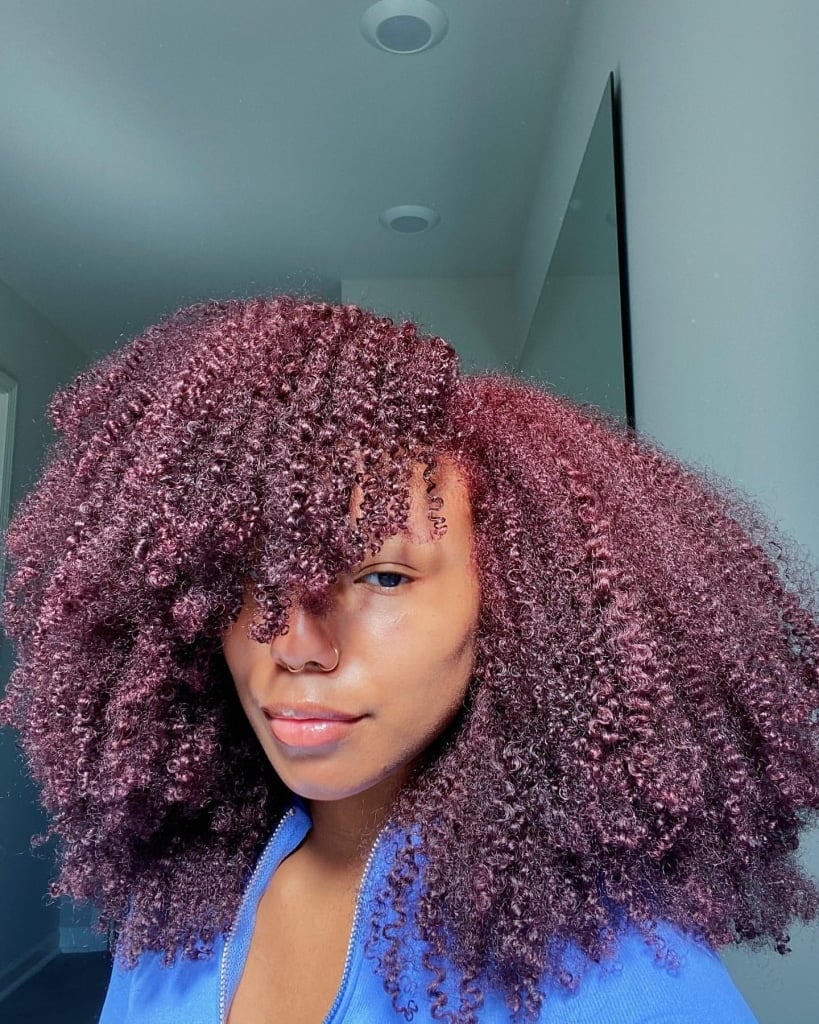
Type 4b hair has densely packed curls that are tighter than 4a. 4b curls resemble tight curls that aren’t as tight as the 4c curls.
4b curls bend in a way that makes them have a zig-zag pattern. If you grab a strand of 4b hair and gently pull it down, you’ll find that it forms tight “Z” curls vertically.
4b curls are also smaller and less defined than 4a curls. They range anywhere from fine and thin to wiry and coarse. 4b hair usually appears to be fluffy, like cotton candy.
Unlike 4a hair, 4b hair usually experiences a lot of shrinkage — up to 50-75% of the hair’s actual length.
4b hair is more prone to breakage than 4a hair because of its tighter curls. Once you neglect 4b hair, you can increase your chances of breaking and tangling your hair.
Do your curls form densely packed zig-zags? Does your fro look like sweet cotton candy? Then, you could be rocking beautiful 4b hair.

4b Hair Moisturizing Tips
4b hair is prone to dryness. Without moisture, it can lose its shine, tangle into a bird’s nest, and form single-strand knots.
To keep your 4b hair shiny and healthy, pre-poo your hair with oils (like argan, coconut, grapeseed, avocado, and essential oils). Wash your hair and follow up with your deep conditioner to keep your hair hydrated.
So, how can you moisturize 4b hair?
Moisturize your hair with water or leave-in conditioners.
Then apply other moisturizing and sealing products (like shea, mango, and cocoa butters) to keep your curls looking healthy, defined, and popping!
On the downside of 4b:
- 4b hair experiences about 50% shrinkage
- 4b hair is prone to breakage when you don’t care for it (not properly washing, detangling, conditioning, or detoxing your hair consistently)
On the bright side of 4b:
- 4b hair can hold styles longer than 4a hair can (up to 7 days)
- 4b hair usually grows into bold and beautiful afros
- 4b hair is easier to style and manage than 4c hair
Celebrities with type 4b hair:
- Lauryn Hill
- Esperanza Spalding
- Yvette Nicole Brown
Type 4c


4c hair is the queen of thick, bold afros. From afar, 4c hair looks like a thick fro, but if you look closely, you’ll notice very tight, small springs or coils on each strand.
Coils are pretty different from curls. Curls are spiral strands that are easy to see and identify, while coils are smaller strands of hair that resemble springs and are hard to see from afar; unless you’re close enough to see them.
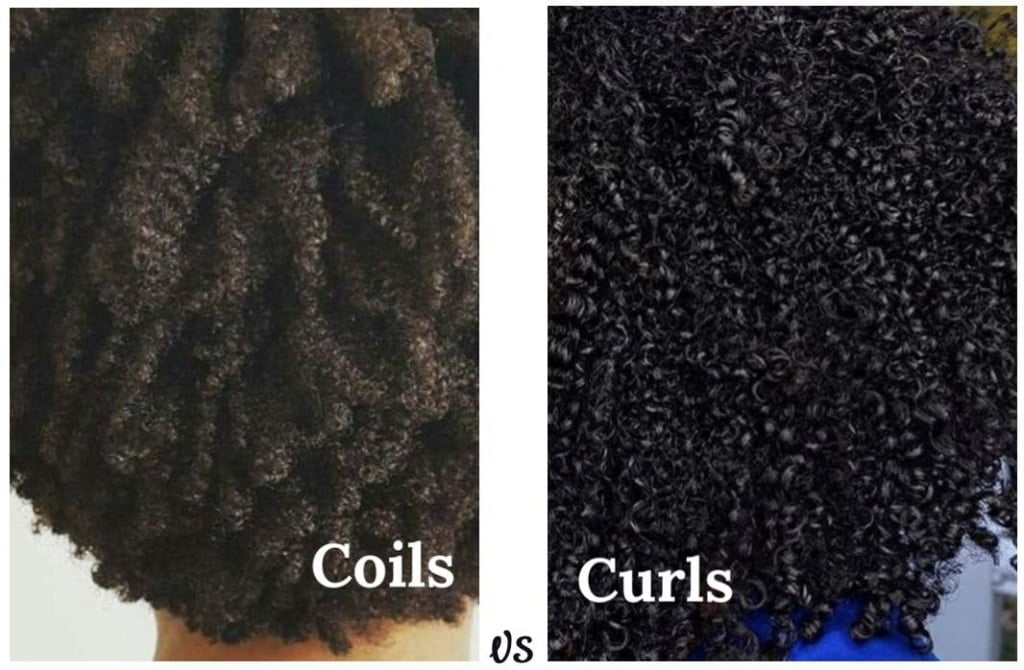
4c hair is so tightly wound around itself that without care, it can easily snap or break. The pattern is: The tighter the curls, the more the breakage.
If your curls seem inseparable and you experience a lot of shrinkage, you’re probably rocking glorious kinky 4c hair.
4c Hair Moisturizing Tips
4c hair is usually dry and hardly retains moisture, so moisturizers (like water and leave-in conditioners) and sealants (like oils and hair butter) are your 4c hair’s best friend. They will help increase the elasticity of your hair while sealing in moisture.
Increasing your hair’s elasticity will prevent breakage by temporarily stretching out your coils, making it easier to handle your hair. And the best part? You’ll get to retain length and prevent single-strand knots or split ends!
Some of the best sealing oils for 4c hair are olive, neem, castor (normal and Jamaican black), moringa, and amla oils. For hair butter, try out cocoa, shea, mango, and chebe hair butter.
On the downside of 4c:
- 4c hair is the queen of breakage. Even after detangling, the curls still find a way to wound around each other.
- 4c hair has unmatched shrinking powers; it can shrink by up to 75%. If you have, say, twenty (20) inches long hair, your 4c shrinkage can make your hair appear only five (5) inches long.
On the bright side of 4c:
- 4c hair takes away the struggles of consistently restyling and handling your hair. It can hold the best protective styles for the longest time — we’re talking one to two (1-2) months!
- When dry, 4c hair practically defies gravity. This feature gives you plenty of style options – updos, buns, frohawks, you name it!
- 4C hair boasts of incredible volume and beautiful, head-turning afros.
Celebrities with type 4c hair:
- Aevin Dugas
- Jill Scott
- Erykah Badu
In a Nutshell
4a hair has sweet S-shaped curls, 4b hair has juicy zig-zagged curl strands and looks like cotton candy, and 4c hair has thick coils that form massive afros.
Here’s a fun fact: No one head can have only one hair type. You can have a mixture of 4a/4b, 4b/4c, 4a/4c, or even a combination of all three (3)!
Have you discovered your hair type(s) yet? Maybe you don’t have type 4 hair; would you like to find out your hair type? Take the Quiz.
Remember. Whatever your hair type, your crown has a unique combination of the most beautiful set of hair strands.


